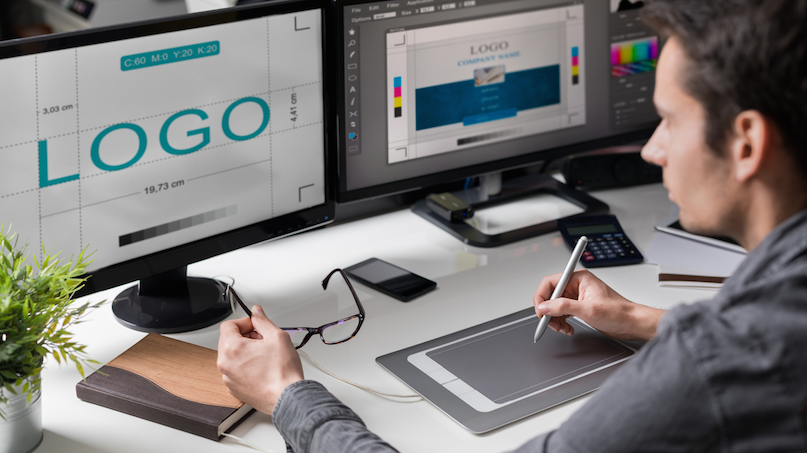In today’s competitive marketplace, your company logo is often the first impression customers get of your brand. A logo is more than just a visual element; it’s the face of your business and an essential part of your brand identity. Designing the best company logo is crucial for establishing recognition, building trust, and creating a lasting connection with your target audience.
But what makes a logo truly effective? In this blog, we’ll explore the essential elements of a successful company logo design and tips for creating a logo that will make your brand stand out.
1. Simplicity is Key
The best company logos are often the simplest. A logo should be easy to recognize and remember, whether it’s viewed on a business card or a billboard. Complex designs can confuse or overwhelm, making them harder for people to recall. Think of iconic logos like Apple, Nike, or McDonald’s—each one is clean, simple, and instantly recognizable.
Tips for simplicity:
- Focus on one or two main elements.
- Use clean lines and shapes.
- Avoid clutter or too many colors.
Why it works: A simple logo is versatile and can be used across various mediums and sizes without losing its impact.
2. Memorability
A great logo sticks in the minds of your audience. Memorability comes from a design that is unique and distinct while staying true to your brand’s personality. A memorable logo doesn’t have to be flashy; it just needs to be distinctive enough that when someone sees it, they immediately think of your company.
How to create a memorable logo:
- Use bold and recognizable shapes.
- Incorporate elements that represent your brand values or products.
- Avoid overused design trends to keep your logo timeless.
Why it works: A memorable logo makes it easier for customers to recognize and recall your brand, leading to stronger brand loyalty.
3. Versatility
Your logo will be used in a variety of places, from your website and social media profiles to business cards, merchandise, and signage. That means it needs to look great no matter where it appears. A versatile logo can be resized, printed in black and white, or placed on different backgrounds without losing its essence.
Tips for versatility:
- Design your logo in vector format for scalability.
- Ensure it works well in both color and monochrome.
- Test how the logo looks in different sizes, from small icons to large banners.
Why it works: A versatile logo saves you time and resources by ensuring it adapts to any platform or medium without needing major adjustments.
4. Timelessness
While it’s tempting to follow current design trends, the best logos are timeless. A logo should be able to stand the test of time and remain relevant for years to come. Trendy designs might look fresh today, but they can quickly become outdated, forcing you to rebrand and lose brand recognition.
How to design a timeless logo:
- Focus on classic design principles like balance and proportion.
- Avoid trendy fonts or effects that might lose their appeal.
- Keep the design elements consistent with your brand’s long-term vision.
Why it works: A timeless logo helps build a consistent brand identity that evolves with your company, avoiding costly redesigns in the future.
5. Color Psychology
Colors evoke emotions and can influence how people perceive your brand. The colors you choose for your logo should align with your brand’s message and target audience. Each color carries its own meaning—blue is often associated with trust, green with growth or nature, red with energy, and black with luxury or sophistication.
Tips for choosing colors:
- Research color psychology and select shades that represent your brand’s personality.
- Stick to a limited color palette (two or three main colors) for simplicity.
- Ensure the colors are cohesive with your overall brand style.
Why it works: The right colors can evoke specific emotions and associations in your audience, helping to create a deeper connection with your brand.
6. Relevant to Your Brand
Your logo should reflect what your business does and the industry you’re in. For example, a tech company might opt for sleek, modern lines, while a bakery may go for a more playful and whimsical design. The logo should capture the essence of your brand and be relevant to your target market.
How to ensure relevance:
- Consider what makes your company unique and try to visually represent that.
- Make sure your logo design aligns with the values, services, or products you offer.
- Avoid being too literal but ensure the logo evokes the right feeling.
Why it works: A logo that clearly communicates your brand’s purpose makes it easier for customers to understand who you are and what you do at a glance.
7. Typography Matters
Choosing the right font is critical in logo design. Typography should be clear, legible, and aligned with your brand’s personality. Whether you choose a sleek, sans-serif font for a modern look or a handwritten font for a more personal touch, the font must complement your logo’s overall design.
Tips for choosing typography:
- Keep the font readable at all sizes.
- Consider custom fonts or modifying existing fonts to make your logo unique.
- Ensure the font reflects your brand’s tone—professional, playful, edgy, etc.
Why it works: The right typography can elevate your logo design and make it more cohesive and aligned with your brand message.
8. Originality
Finally, the best company logo designs are original. Your logo should distinguish your brand from competitors and showcase your unique identity. Copying or using generic templates might save time, but it will harm your brand’s credibility in the long run.
How to ensure originality:
- Research your competitors to avoid similarities.
- Work with a professional designer or agency to create something tailored to your brand.
- Focus on what makes your business unique and reflect that in the design.
Why it works: An original logo helps your brand stand out in a crowded market and fosters a stronger connection with your audience.
Conclusion
Creating the best company logo design is a vital step in building your brand’s identity and establishing a strong presence in the market. By focusing on simplicity, memorability, versatility, and timeless design principles, you can craft a logo that not only represents your business but also leaves a lasting impression. Whether you’re starting a new venture or rebranding an existing one, a well-designed logo can be a powerful tool for your company’s success.


